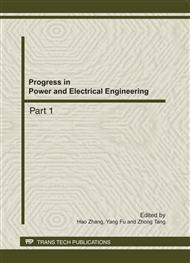p.522
p.527
p.531
p.535
p.541
p.548
p.552
p.559
p.564
Numerical Study on the Quasi-Dimensional Model of Diesel Engine for Performance Optimization
Abstract:
In this paper, a phase-divided spray mixing model is proposed and the quasi-dimensional model of diesel engine working process is developed. The software MATLAB/Simulink is utilized to build the quasi-dimensional model of diesel engine working process, and the performance for diesel engine is simulated. The simulation results agree with experimental data quite well which indicates that the simplified quasi-dimensional model has high precision for predicting diesel engine performance. By utilization of this simulation model, the average computational time for one diesel engine working process is 36 s, which presents good real time operating performance of the model. On the basis of the principle of orthogonal test design, the performance of diesel engine was optimized by use of the quasi-dimensional model.
Info:
Periodical:
Pages:
541-547
Citation:
Online since:
October 2011
Authors:
Price:
Сopyright:
© 2012 Trans Tech Publications Ltd. All Rights Reserved
Share:
Citation:


